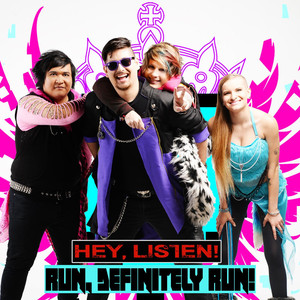Wild Things: Cinco De Mayo – furry fetish party in San Francisco, May 5.
by Patch O'Furr
Friday, May 05, 2017. 8PM – 1AM.
SF Citadel, 181 Eddy St., San Francisco.
Cost: $25. Dress code: Animal-themed, fetish, creative, etc.
Visit the Fetlife event page for info. Many volunteer positions available.
 WILD THINGS is an 18+ party for furries, petplayers, pups, primals, littles, and everyone who accepts them, but the furry community is the heart of it. The first event was in 2014 (see WILD THINGS tag.) In 2016 it became quarterly by support of the SF Citadel club.
WILD THINGS is an 18+ party for furries, petplayers, pups, primals, littles, and everyone who accepts them, but the furry community is the heart of it. The first event was in 2014 (see WILD THINGS tag.) In 2016 it became quarterly by support of the SF Citadel club.
For March’s Mardi Gras event, organizer Mark explained:
Wild Things wants to be inclusive to anyone who is new, making them feel welcome, unpressured, and free to learn and explore at their own pace, if they wish. We advocate tolerance and respect for others, so people can live and let live, and let adults be adults however they choose to do so… come without judgements and see for yourselves.
What’s happening this time? Perhaps sexy party games and pinatas, human/furry pinata suspensions, wrestling/Lucha masks… all that and a taco bar! Previous features continue:
– Music by DJ’s AuralIncarnation (Bent) and Gretchen Weeners (Death Guild, House of Nox)
– Suspensions by Naturalturn (Naughty Knotty)
– Vacuum bed & waxplay demos by Spottacus
– Petplay, puppyplay, and furry demos
– Fursuit gear demos
– The cuddle zone
– Petplay / puppyplay romp!



 The Furry Nerdcore band known as “Run, Definitely Run!” decided that it was DISBANDING After Texas Furry Fiesta (Dallas Convention 2017).
The Furry Nerdcore band known as “Run, Definitely Run!” decided that it was DISBANDING After Texas Furry Fiesta (Dallas Convention 2017). Spirit Hunters. Book 4: Shadow of the Oni, by Paul Kidd . Illustrated.
Spirit Hunters. Book 4: Shadow of the Oni, by Paul Kidd . Illustrated. Foxhunt!, by Rich Hanes. [2nd edition]
Foxhunt!, by Rich Hanes. [2nd edition]
 Payu’s Journey, by R. Lawson Gamble. Map.
Payu’s Journey, by R. Lawson Gamble. Map. Love Match, by Kyell Gold. Illustrated by Rukis.
Love Match, by Kyell Gold. Illustrated by Rukis. The Goat: Building the Perfect Victim, by Bill Kieffer
The Goat: Building the Perfect Victim, by Bill Kieffer ConFurence, the
ConFurence, the 